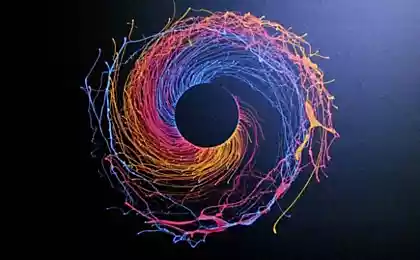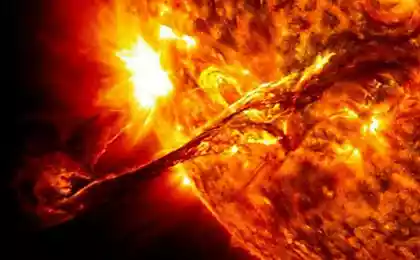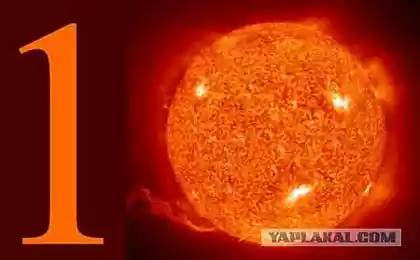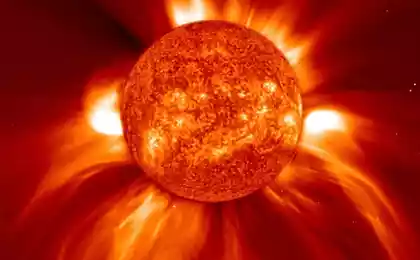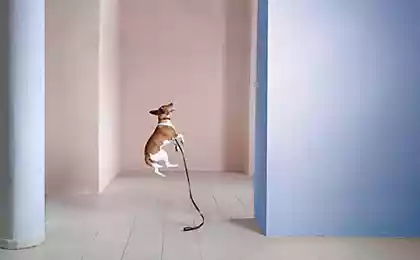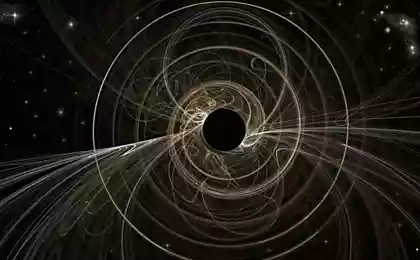467
Physics recorded the possible dark matter of the Sun
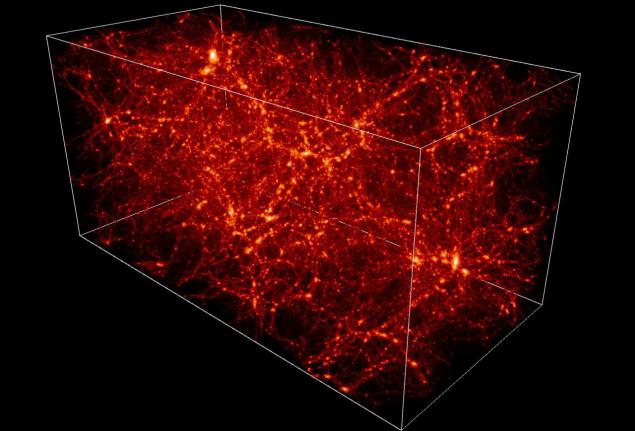
The analysis of data collected using the telescope for 12 years, gave a hint of what may be the first detection of dark matter, reports Nature. Astronomers found changes in the x-ray flux, which was observed by the Observatory of the European space Agency. The changes led to the idea of axions — a hypothetical dark matter particles which interact with Earth's magnetic field.
Dark matter is called dark not because of his color, but because of the fact that it is really not known. As suggested, this substance is not less than 85% of all matter in the Universe. It's dark, because her presence is detected by its gravitational effects throughout the Universe, but just to detect it until now nobody managed. Although hints, of course, appear.
If this information is confirmed, the detection of axions will be an incredible discovery. Study leader, astronomer George Fraser of the University of Leicester in the UK, died two days later after his colleagues had submitted a paper for publication. Research Frazier was "most astonishing Swan song", wrote Andy Lawrence, an astronomer at the Astronomical Institute in Edinburgh.
Although the work was accepted and will be published on 20 October, the surviving authors are not in a hurry to open the champagne.
"We found unusual results that cannot be explained by any of the conventional ways, but who can explain the theory of axions, says Andy Reid, co-author of the work. But this is only a hypothesis."
Axions were originally proposed as an explanation for anomalies in other field of physics — the theory of the strong nuclear interaction, one of the four fundamental forces of nature. These uncharged and very light particles can appear in the core of the Sun and hardly interact with ordinary matter. This means that they can prescolite through thousands of kilometres of solar plasma and escape into outer space. But the axions would interact with magnetic fields like the one that surrounds Earth, and turn into x ray photons. It is these photons, as scientists think they saw.
A team of scientists found that when a European probe XMM-Newton passed through a strong magnetic field on the sun side of the Earth, he has recorded more intense x-ray signal than when it was on the far side of the Earth. Eliminating known sources of x-rays, scientists expect to see background signal in the same way he used to.
In its 67-page work, the researchers have made every effort to exclude ordinary earthly phenomena — for example, the interaction of solar wind with Earth's magnetic field, and then went to the explanation using the theory of axions.
One of the unusual aspects of this analysis is that XMM-Newton detects x-ray photons even if not looking directly at the Sun, and at a right angle. (It was expected that the photons will continue to move in the same direction from which came the axions). However, as the authors say, axions continued to dissipate and get into the telescope.
They also indicate that hints of a similar signal found x-ray Observatory "Chandra", although formal confirmation of this will take several years of analysis.
Not everyone is happy with the interpretation with the help of axions. Astronomer Peter Coles of the University of Sussex in the UK called the evidence "circumstantial". He says that most would put on a mixed local physics of plasma, rather than something more fundamental.
Igor Garcia Irastorza working at axion solar telescope at CERN (CAST), agrees that the signal is intriguing. But the type of axions, which could explain this signal, in conflict with other astrophysical observations. Also, according to him, the properties of these particles must differ from those theoretically expected for decades.
Mike Watson, also working at the University of Leicester, but did not participate in the work, says that Fraser was an "exceptional scientist" and the master of their work.
"Interpretation is quite interesting, and humanly worthwhile to recognize her as a faithful tribute to the memory of George. But in science do".
Source: hi-news.ru
The famous Philharmonic hall in St. Petersburg was lit anew
The Koreans have invented a new method of producing "green" energy



